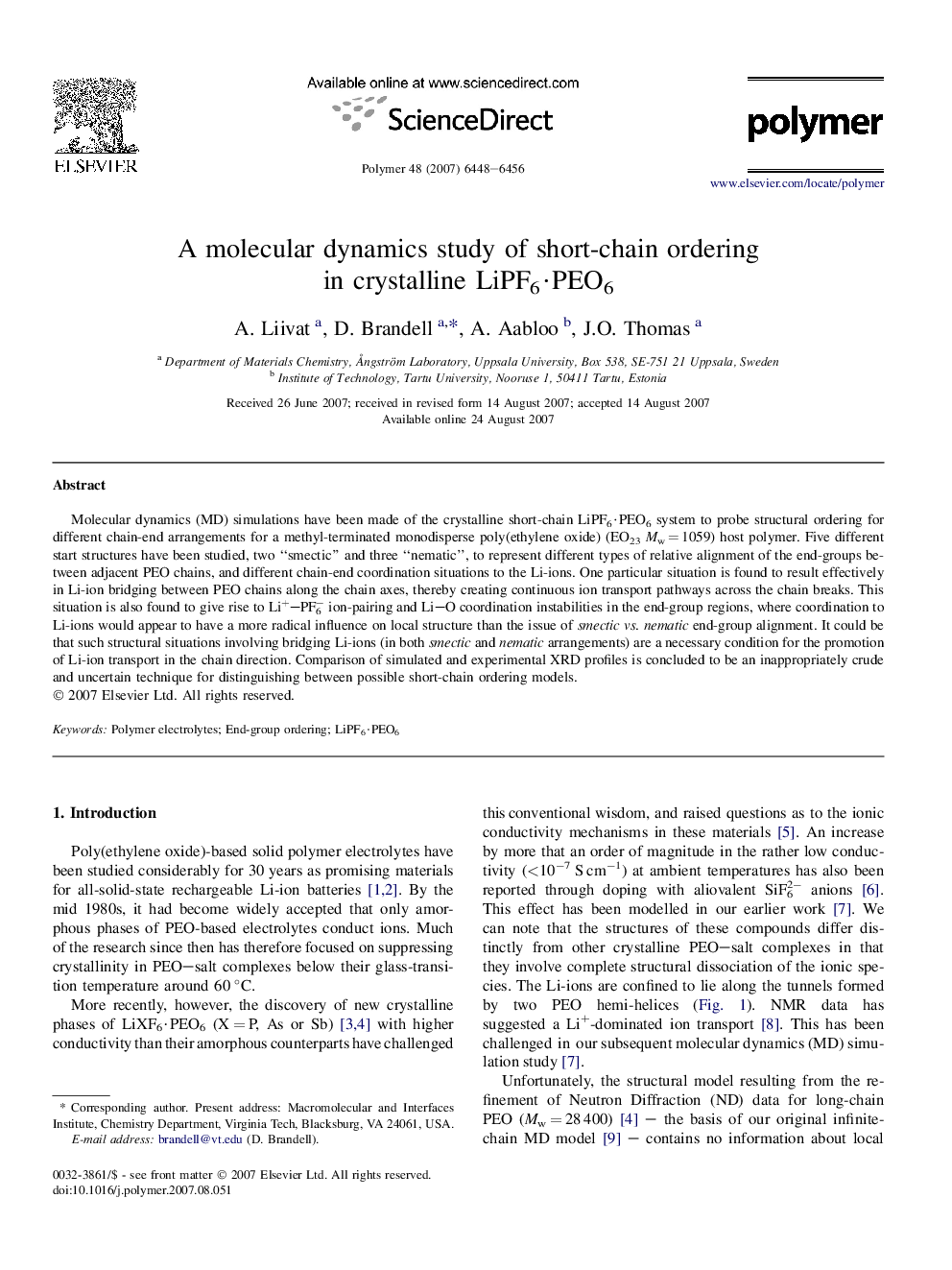| Article ID | Journal | Published Year | Pages | File Type |
|---|---|---|---|---|
| 5188539 | Polymer | 2007 | 9 Pages |
Abstract
Molecular dynamics (MD) simulations have been made of the crystalline short-chain LiPF6·PEO6 system to probe structural ordering for different chain-end arrangements for a methyl-terminated monodisperse poly(ethylene oxide) (EO23Mw = 1059) host polymer. Five different start structures have been studied, two “smectic” and three “nematic”, to represent different types of relative alignment of the end-groups between adjacent PEO chains, and different chain-end coordination situations to the Li-ions. One particular situation is found to result effectively in Li-ion bridging between PEO chains along the chain axes, thereby creating continuous ion transport pathways across the chain breaks. This situation is also found to give rise to Li+-PF6â ion-pairing and Li-O coordination instabilities in the end-group regions, where coordination to Li-ions would appear to have a more radical influence on local structure than the issue of smectic vs. nematic end-group alignment. It could be that such structural situations involving bridging Li-ions (in both smectic and nematic arrangements) are a necessary condition for the promotion of Li-ion transport in the chain direction. Comparison of simulated and experimental XRD profiles is concluded to be an inappropriately crude and uncertain technique for distinguishing between possible short-chain ordering models.
Keywords
Related Topics
Physical Sciences and Engineering
Chemistry
Organic Chemistry
Authors
A. Liivat, D. Brandell, A. Aabloo, J.O. Thomas,
